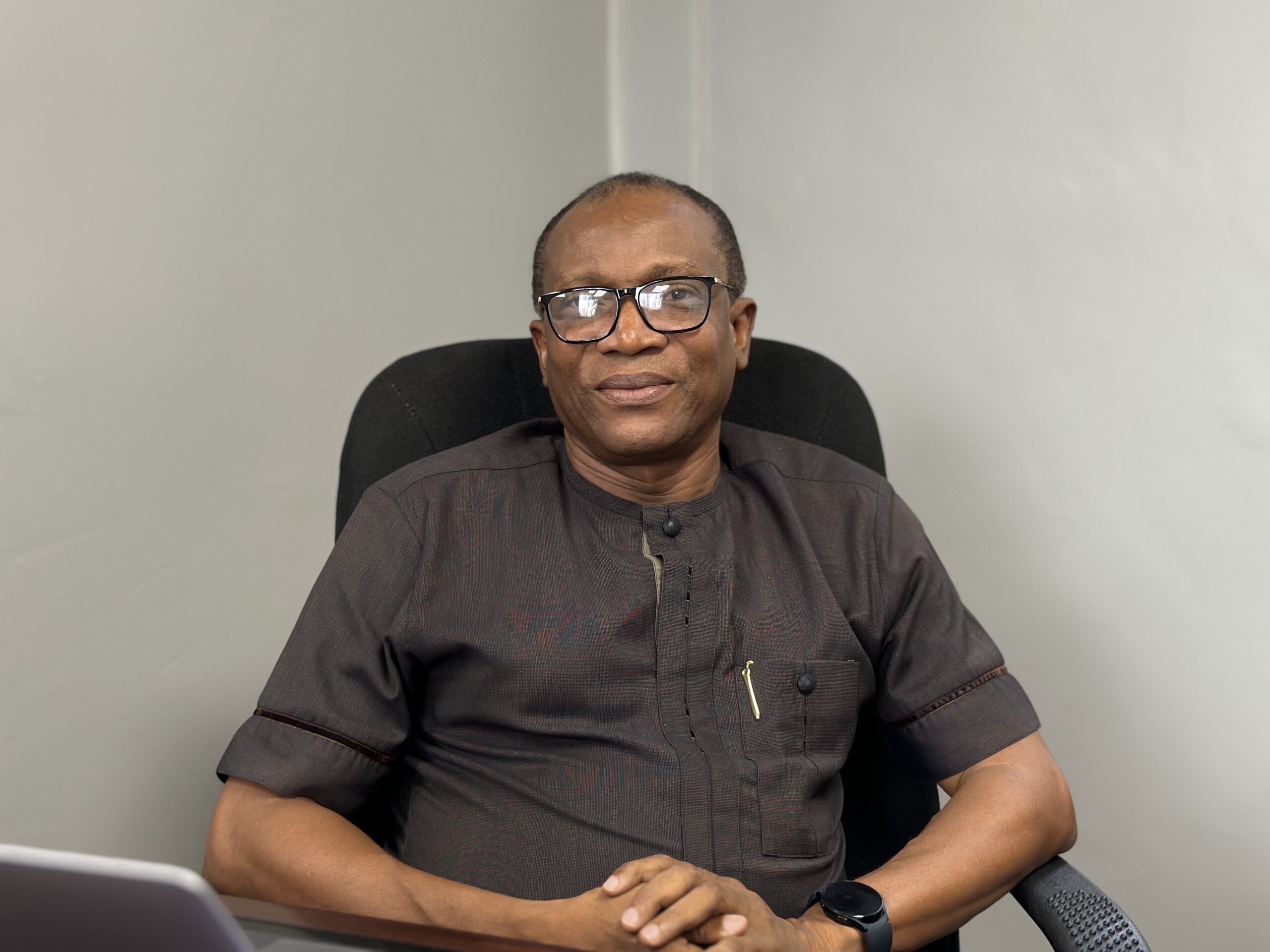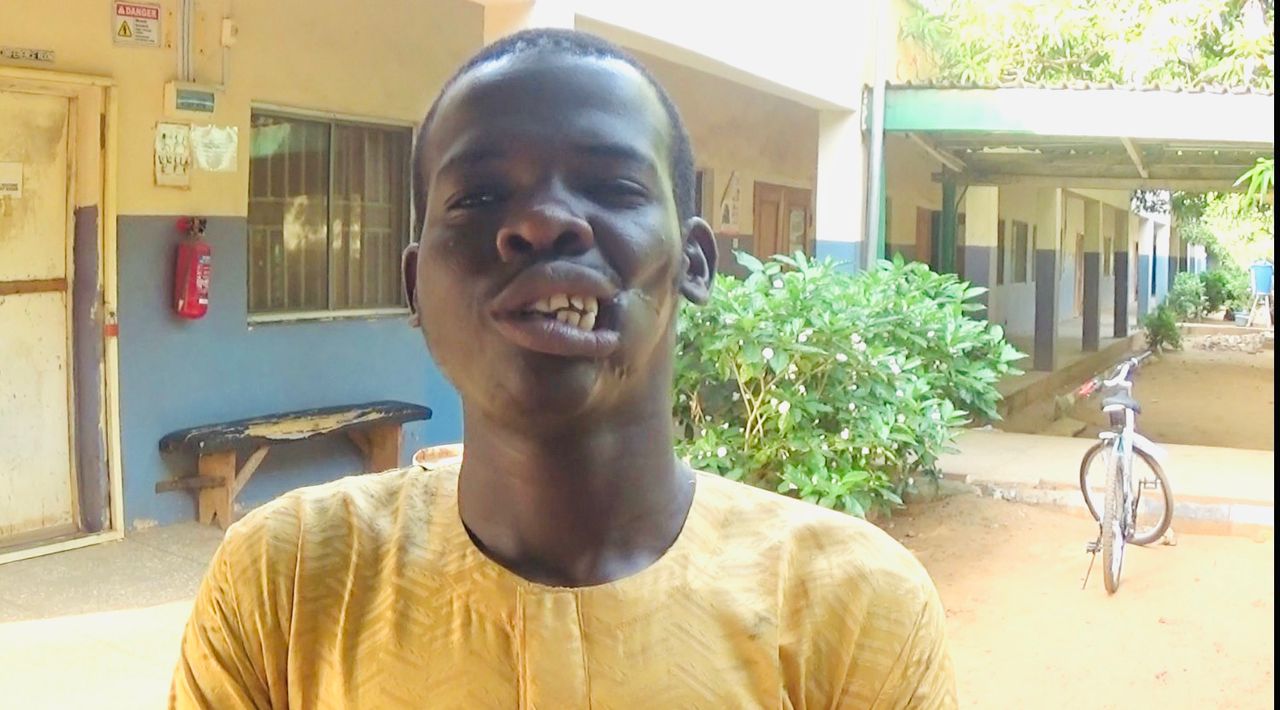Five-year-old Fatsuma Zubairu sat glumly on a bed in a ward at the Noma Children’s Hospital in Sokoto State. A gaping wound has impaired her delicate features and her lips are hanging, exposing her teeth.
Fatsuma was brought to the hospital by her mother, Aisha Zubairu, from Bagwai LGA in Kano State, after weeks of fruitless attempts to seek treatment for the condition.
Persistent itchiness in her mouth, gnawing pain and unusual bleeding of her gums were the initial symptoms Fatsuma exhibited, but unknown to her mother, those were only the beginning of her cruel fate.

Within a few days, the child’s cheeks began to swell and an open wound emerged, rapidly spreading its sinister influence. Within a short period, the disease known as noma had unleashed its merciless assault on Fatsuma’s face.
By the time she was presented to the hospital, her infant face had been scarred.
“The problem started recently, and we were advised to go to Kano town, but unfortunately, they couldn’t offer such treatment. So they referred us to this hospital in Sokoto,” her mother, Aisha, said when PREMIUM TIMES visited in August.
Dangerous disease
Noma, also known as Cancrum Oris, is a preventable and treatable disease that affects poor people, especially young children, and is associated with malnutrition and unsanitary living conditions. Mostly, it affects people in isolated communities who have limited access to healthcare and vaccinations.
The disease starts as an inflammation of the gums, similar to a small mouth ulcer.
But in just two weeks the infection starts to destroy bone and tissue, potentially affecting the jaw, lips, cheeks, nose, or eyes.
When left untreated, noma claims the lives of between 70 and 90 per cent of those affected while survivors are left with varying degrees of facial deformities, significantly impairing their smiles, facial appearances, speech, and other functions, depending on the extent of facial damage.
The disease spreads among children from impoverished families who have limited access to dental care, suffer from low immunity due to malnutrition and are presented late to the hospital. Also, sharing the same source of drinking water with animals can expose them to harmful bacteria.
The Médecins Sans Frontières (MSF) health advisor for Nigeria, Mark Sherlock, said there are very few infectious diseases with such a high death rate.
Mr Sherlock said people die from noma because of limited knowledge about the disease and how to detect it.
Origin, statistics
Noma is prevalent in sub-Saharan Africa, though cases have been detected in the US, Southeast Asia, and South America. It has been recognised for more than 1,000 years but emerged in Europe in concentration camps during the Second World War.
Research and data on noma are scarce, making it impossible to know the number of existing cases globally. However, some estimates put it at 30,000 to 40,000 a year.
The World Health Organisation (WHO) estimated in 1998 that there may be up to 140,000 cases a year, and 770,000 survivors of the disease.
While Nigeria does not have an official figure, most cases of the disease are found in the northern part of the country due to the higher prevalence of risk factors in the region.
More noma cases
Just like Fatsuma, six-year-old Zainab Abdulnasir is also suffering from the impact of noma. Zainab, who was brought to the hospital by her mother, Fatima Adam, is one of many children in the ward at the Noma Treatment Centre in Sokoto.
Ms Adam said her daughter’s situation started with normal teeth pain.
“Then we went to a dentist, they checked and told us the teeth had not reached a point to be removed, but that the affected area had started swelling, though still strong. They asked us to go back home.”
Ms Adam explained that after all their attempts to treat the disease failed, they were referred to the Sokoto centre from Abuja.
“We were first referred to a hospital in Suleja in Niger State, then to Gwagwalada hospital in Abuja, and finally they referred us to the Noma Children’s Hospital in Sokoto.”
She lamented that the disease has left her daughter’s face disfigured and scary to others.
Auwalu Yahuza, a resident of Illela LGA of Sokoto, was also undergoing treatment at the Sokoto centre. His mother explained that an unnamed person directed them to the centre after many months of trying to get help.

Charles Ononiwu, a maxillofacial surgeon, said the spread of noma is rapid and causes damage within two weeks, including leading to death.
Mr Ononiwu, who is also the Coordinator of Noma Aid Nigeria Initiative (NANI), explained that only about 10 per cent of children with this disease survive, and they always end up with severe facial deformities.
“Although this disease primarily affects children, it can also affect adults,” he said.

“It affects children from two to six years, which is actually the peak period, but it can also occur in older children and even adults if the predisposing factors are present,” he said.
50-year-old Mallama Takaso is one such adult suffering from noma. Ms Takaso, a resident of Tunga Rini in Bagudo Local Government Area of Kebbi State, is also receiving treatment at the moma centre in Sokoto.
According to a nurse, Ms Takaso is awaiting surgery.

Risk factors, presentation
Shafiu Isah, the Chief Medical Director (CMD) of the hospital in Sokoto, emphasised that the underlying cause of noma is poverty, saying impoverished families struggle to provide their children with the necessary resources for healthy growth.
Mr Isah explained that the lack of access to clean drinking water, quality healthcare, and nutritious food are also contributory factors, which he noted predominantly affect those residing in remote communities with inadequate basic amenities.

He said the eradication of poverty is essential to defeating noma, as improved living conditions and better nutrition can enhance children’s immunity against the infection.
“Vaccination is another critical preventive measure. Measles is often a precursor to noma, so ensuring that children receive proper vaccination is crucial,” he said.
He emphasised the importance of early reporting and urged parents and guardians to seek medical attention promptly if they notice symptoms of noma in their children.
Mr Isah lamented that about 90 per cent of cases are presented to the hospital at a late stage, with severe flesh deterioration, discharges and an offensive odour. “At this advanced stage, treatment options are limited, but efforts are made to save lives and salvage what remains of the patient’s face.”
Mr Ononiwu, the maxillofacial surgeon, stressed the importance of immediate reporting to a healthcare facility if early symptoms, such as mouth ulcers, are observed.
He said when presented at very early stages, the disease can be prevented from progressing to facial destruction.
“Noma is a disease of poverty, so the majority of people who present with such cases lack the resources needed to effectively manage the disease,” he said.
Neglected disease
Despite years of campaigns by medical organisations and government, noma is yet to be included in WHO’s list of Neglected Tropical Diseases (NTD).
This may however change soon because of moves led by the Nigerian government.
In late January, the Federal Ministry of Health of Nigeria, supported by 30 member states from five WHO regions, submitted a dossier on noma requesting the formal recognition of noma as an NTD.
The request for noma’s inclusion on the WHO’s list is in line with the resolution on oral health adopted in 2021 at the 74th World Health Assembly, recommending that “noma should be considered for inclusion in the NTD portfolio as soon as the list is reviewed in 2023.”
According to WHO, NTDs are diseases that disproportionately affect people living in poverty and cause significant morbidity and mortality, including stigma and discrimination, justifying a global response. They are also described as diseases that primarily affect people living in tropical and sub-tropical areas, but that are immediately amenable to broad control, elimination or eradication by applying one or more of the five public health strategies adopted by the Department for Control of NTDs, but relatively neglected by research.
Shuaibu Musa, a consultant paediatrician at Barau Dikko Teaching Hospital in Kaduna State, said noma is a neglected disease suffering from a lack of attention from the community, healthcare providers, and the government at large.
Mr Musa explained that noma is not widely recognised, even in regions where it is prevalent. Hence, many people, including healthcare professionals, may not be familiar with the disease, leading to delayed diagnosis and treatment.
He also said, compared to other diseases, noma receives significantly less research funding and attention. “This lack of research means there is limited understanding of the disease’s causes, risk factors and effective treatment strategies.”
“Healthcare facilities in areas with high noma prevalence may lack the necessary resources, including trained healthcare professionals and medical equipment, to diagnose and treat the disease adequately.
“Noma’s status as a neglected disease underscores the urgent need for increased awareness, research, and investment in prevention and treatment efforts to alleviate the suffering of affected individuals and communities.”
In a statement published on its website, the MSF health advisor for Nigeria, Mr Sherlock, said the inclusion of noma in the list would shine a spotlight on the most neglected of neglected diseases.
Mr Sherlock said this will facilitate the integration of noma prevention and treatment activities into existing public health programmes and the allocation of much-needed resources.
“We want children to be screened in endemic countries for noma from the first sign of symptoms when lives can still be saved. Noma is a disease that should no longer exist,” he said.
Rejection, stigmatisation
Many noma patients experience stigmatisation for the rest of their lives, especially those unable to undergo facial surgery. Often, such individuals hide in their homes or live in isolation to avoid interaction with their communities.
One such person is 20-year-old Muhammad Usman, a resident of Dapchi in Bursari Local Government Area of Yobe State. Mr Usman revealed that the disease began when he was much younger and that his father tried to get proper treatment for him. He recalled that at the early stage of the disease, his father took him to a hospital in Maiduguri, where he stayed for about three months.
“The medication at the hospital mostly relieved the pain, but the disease kept growing, so we left and went back to the village,” he said.

He explained that a resident in his community informed him about the treatment centre, where he eventually had a successful operation.
Despite the operation, Mr Usman expressed deep sadness due to the damage the disease had caused to his face.
“I don’t feel happy at all. I’m always in isolation because I cannot interact with people freely. I cannot eat in public.”
Mr Musa, the consultant paediatrician, said people affected by the disease often face stigma and discrimination due to being disfigured by the disease.
He said this could lead to isolation and reluctance to seek medical care or share their experiences, further contributing to the disease’s obscurity.
Support PREMIUM TIMES’ journalism of integrity and credibility
Good journalism costs a lot of money. Yet only good journalism can ensure the possibility of a good society, an accountable democracy, and a transparent government.
For continued free access to the best investigative journalism in the country we ask you to consider making a modest support to this noble endeavour.
By contributing to PREMIUM TIMES, you are helping to sustain a journalism of relevance and ensuring it remains free and available to all.
Donate
TEXT AD: Call Willie – +2348098788999






